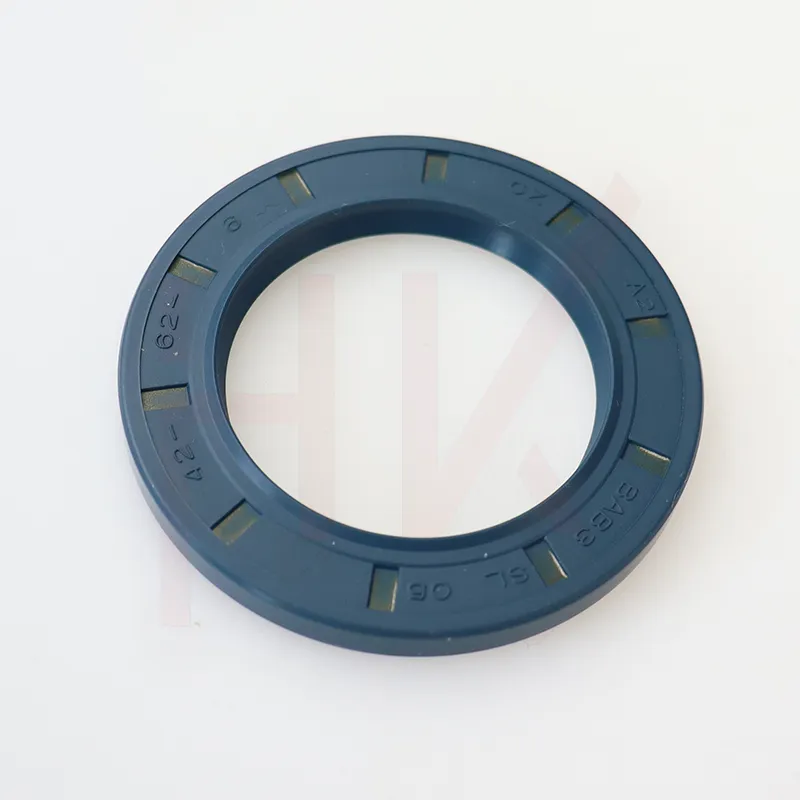Jul . 27, 2024 15:21 Back to list
Exploring Different Types of Hydraulic Oil Seals for Enhanced Performance and Reliability in Machinery
Understanding Hydraulic Oil Seal Types
Hydraulic systems are essential in various industries, ranging from manufacturing and construction to automotive and aerospace. They rely on hydraulic oil seals to maintain pressure, prevent leaks, and ensure system efficiency. This article will explore the different types of hydraulic oil seals, their applications, and the factors influencing their selection to help you make informed choices for your hydraulic systems.
What are Hydraulic Oil Seals?
Hydraulic oil seals, often referred to as fluid seals, are components used to prevent the escape of hydraulic fluid and the ingress of contaminants. They are crucial in maintaining the integrity of hydraulic systems by ensuring that the hydraulic pressure remains stable. A well-functioning seal not only enhances system performance but also prolongs the life of hydraulic components.
Types of Hydraulic Oil Seals
1. U-Cup Seals U-cup seals are popular for rod sealing applications. Their unique 'U' shape allows for effective sealing against both dynamic and static conditions. They can accommodate high pressures and are often made from materials like polyurethane or rubber for flexibility and resilience.
2. O-Rings O-rings are versatile seals that can be used in various applications. They are circular in shape and are placed in a groove to create a seal when compressed between two surfaces. O-rings are easy to install and can be made from different materials, including nitrile, silicone, and fluorocarbon, allowing for use in various temperature and pressure conditions.
3. Lip Seals Lip seals, sometimes called rotary seals, are designed for rotating applications. They usually consist of a flexible lip that contacts the shaft, providing an effective barrier against the escape of fluids. Lip seals are commonly used in hydraulic pumps and motors, where they need to withstand high speeds and pressures.
4. V-Seals V-seals, or V-rings, are specifically designed for axial sealing. They have a triangular cross-section and can fit over a rotating shaft or a cylindrical surface. V-seals are particularly effective in preventing the ingress of dust and dirt, making them suited for applications in rugged environments.
hydraulic oil seal types

5. Packings Packing seals consist of fibrous materials that are compressed against a shaft to seal the fluid. They are often used in conjunction with stuffing boxes and are excellent for applications requiring high resistance to pressure. Although packings may require more maintenance, they provide robust sealing capabilities in high-pressure scenarios.
Factors to Consider When Choosing Hydraulic Oil Seals
When selecting the appropriate hydraulic oil seal, consider the following factors
- Material Compatibility The sealing material must be compatible with the hydraulic fluid to prevent degradation. Common materials include nitrile for petroleum-based fluids, fluorocarbon for aggressive chemicals, and polyurethane for high wear resistance.
- Temperature and Pressure Ratings Each seal has specific temperature and pressure limitations. Ensure that the selected seal can withstand the operational conditions of your hydraulic system.
- Application Type Different applications may require different types of seals. For instance, dynamic applications often need lip seals or U-cups, while static applications can effectively use O-rings.
- Installation Requirements Consider the ease of installation and maintenance. Some seals, like O-rings, are easier to install, while others may require specialized tools.
Conclusion
Hydraulic oil seals are vital components in ensuring the efficiency and longevity of hydraulic systems. Understanding the different types of seals available and their respective applications equips users with the knowledge to make informed decisions. By considering the factors mentioned above, you can select the most suitable seal for your hydraulic needs, ensuring optimal performance and reliability.
-
Wiper Oil Seal: Our Commitment to Clean Hydraulics
NewsAug.13,2025
-
Hydraulic Oil Seal for Self Discharging Cars
NewsAug.13,2025
-
Hub Oil Seal for Agricultural Tractor Hubs
NewsAug.13,2025
-
Skeleton Oil Seal with NBR Material
NewsAug.13,2025
-
Rotary Lip Seal for High Pressure Applications
NewsAug.13,2025
-
Cylinder Seal Kits Our Legacy of Hydraulic Trust
NewsAug.13,2025
-
Unlocking the Potential of Hydraulic Systems with Essential Sealing Solutions
NewsAug.06,2025
Products categories
















